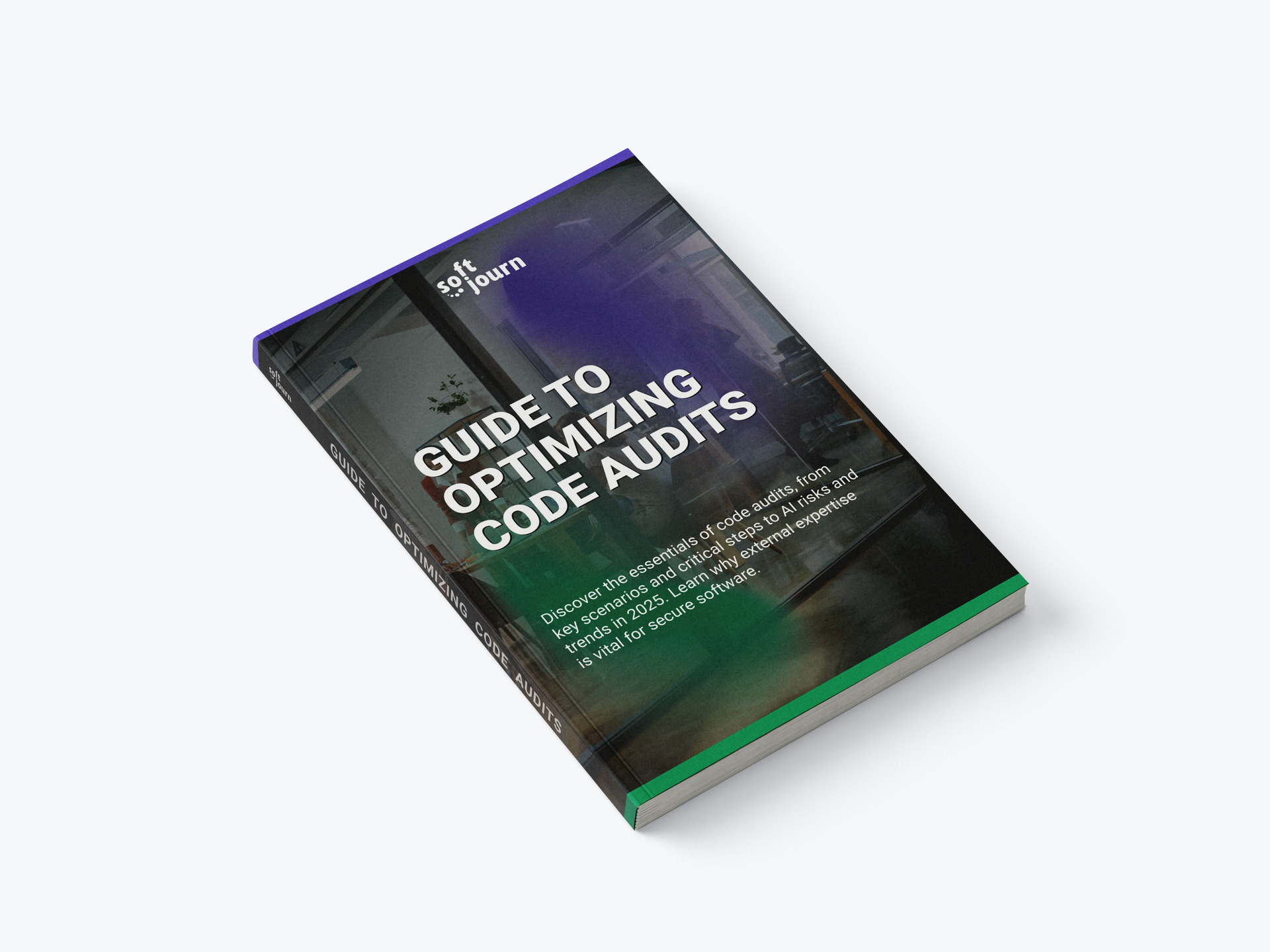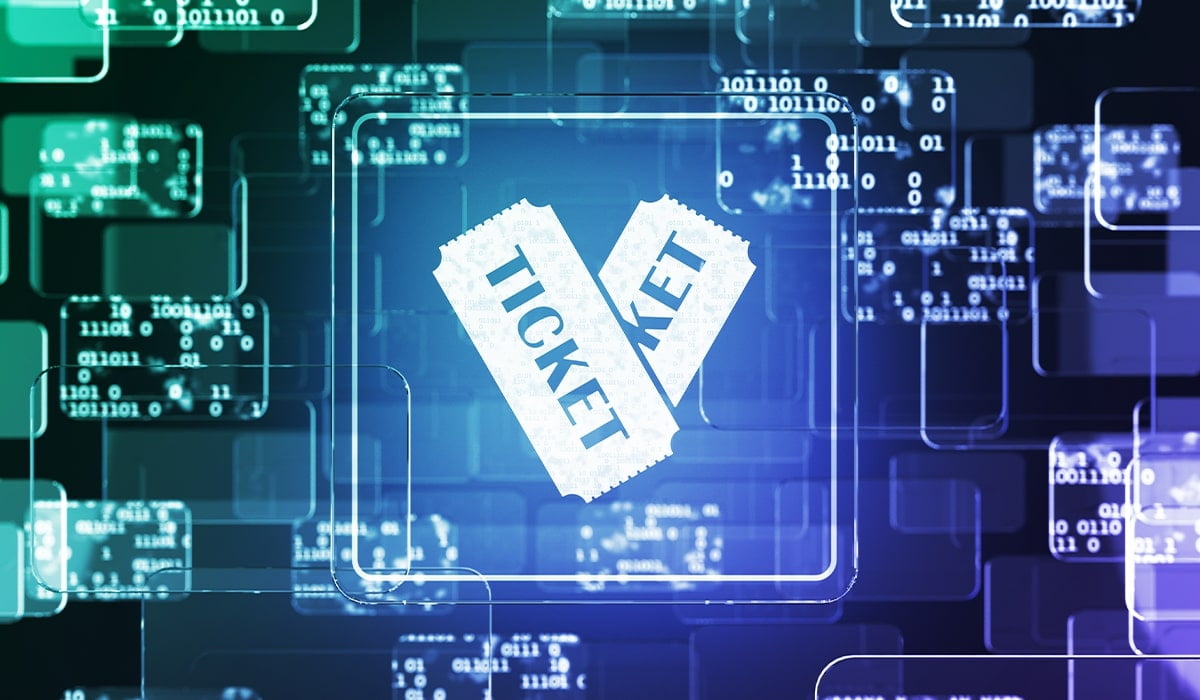The event ticketing industry is constantly evolving and adapting to new technologies and consumer behaviors. Every year brings new challenges, evolving audience expectations, and emerging technologies that reshape the way events are sold and experienced. While analysts debate the future of event ticketing, we're building it.
Over the past 20 years, Softjourn has developed ticketing technology for platforms processing millions of transactions, venues hosting sold-out shows, and entertainment companies navigating everything from bot attacks to blockchain integration. Our expertise runs deep: we've architected scalable systems that handle ticket drops for major artists, built fraud prevention algorithms that adapt to new attack vectors in real-time, and created mobile experiences that convert browsers into buyers. We've guided clients through platform migrations, regulatory changes, and technology pivots that determine success or failure in this unforgiving industry.
Our annual trends report isn’t just speculation - it’s built on deep industry expertise, continuous research, and direct conversations with our clients and partners. We analyze the data, explore new innovations, and talk to the people shaping the industry to uncover what’s really happening behind the scenes. As we enter 2025, several key trends are likely to shape the industry and impact ticket sales and distribution
Read on to find out the top trends and event ticketing technology to keep your eye on this year.
Lights, Camera, Trends: Navigating the Evolving Landscape of the Event Ticketing Industry
Step into the dynamic realm of event ticketing, where cutting-edge technology and innovation are reshaping the way we purchase tickets, attend concerts, and immerse ourselves in live events.
With the online event ticketing market hitting $62.24B in 2024, the Event Ticketing market is poised to grow to $99.2 billion by 2032 at a CAGR of 6%.1 This upward trajectory in the industry signifies an influx of innovative ticketing technology and solutions, accompanied by heightened competition.
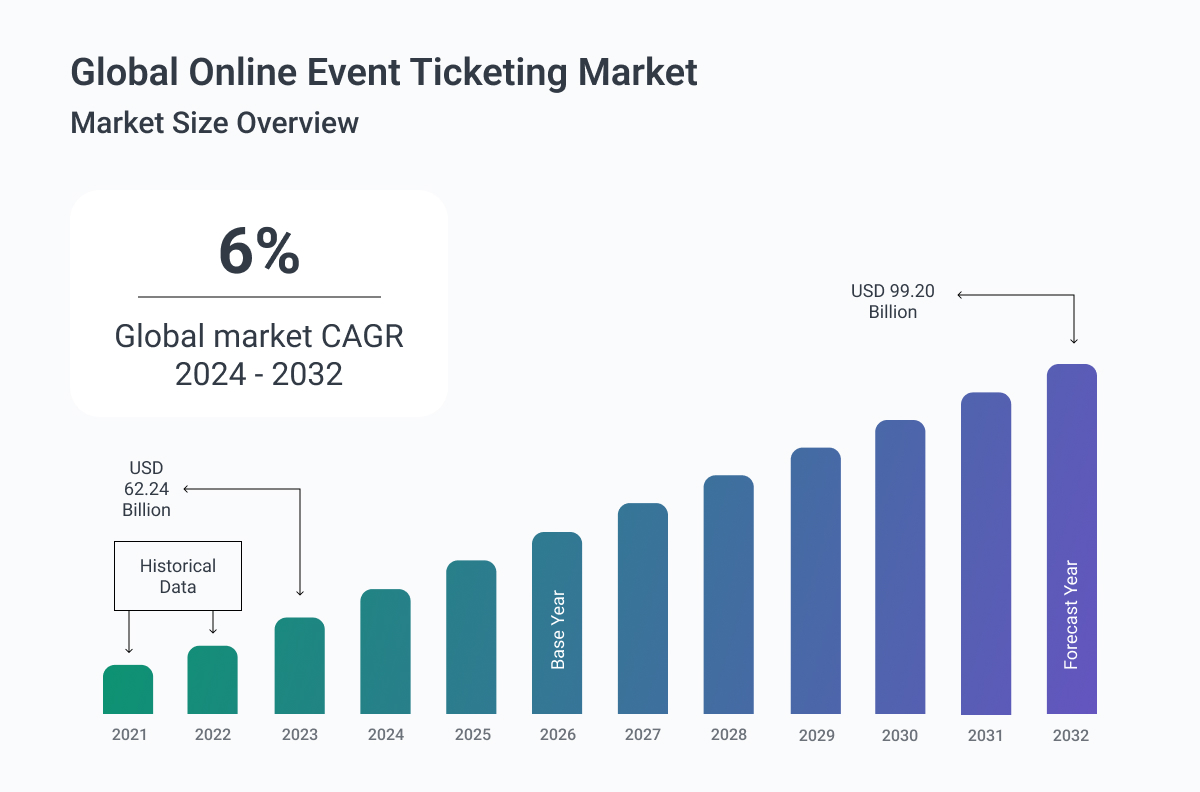
To stay ahead of the curve, it’s imperative to carefully follow the trends and latest developments in ticketing. Rest assured, we're here to keep you in the loop with this year’s advancements in ticketing.
So, prepare for an exciting journey as we dive into the key trends that are transforming the event ticketing industry in 2025, and discover how you can remain at the forefront of this ever-evolving space.

Technology Advancements to Prevent Fraud
In the ticketing landscape, there is a growing threat from scammers and "bad actor" fraudsters. This can include automated bots, which are programmed to exploit vulnerabilities in ticketing systems and snatch up tickets in a matter of seconds.
Synthetic IDs, which are fabricated identities created by fraudsters, have also become increasingly prevalent. These false personas are used to bypass security checks and fraud detection systems, posing significant challenges for ticketing companies.
Account takeovers are yet another facet of this multifaceted problem, with fraudsters gaining unauthorized access to user accounts and exploiting them to make fraudulent purchases. Ticketing platforms must implement solutions to protect both their revenue and their customers.
Ticketing companies and platforms are increasingly turning to advanced technologies and strategies. Among the solutions on the horizon, robust identity verification systems are emerging as critical tools in preventing fraudulent activity.
These systems employ biometric authentication, device fingerprinting, and AI-driven fraud detection algorithms to distinguish between legitimate customers and bad actors, making it significantly more difficult for fraudsters to exploit ticketing systems.
Real-time monitoring of transaction patterns can also help ticketing companies detect and respond to suspicious activities promptly. By analyzing the flow of ticket sales, sudden surges, or unusually high purchase volumes can trigger alerts, enabling platforms to investigate and take preventive measures.
Blockchain-powered smart contracts streamline ticket transactions by automating validation, refunds, and payouts, ensuring transparency and reducing manual errors. This complements existing blockchain features such as secure ticketing and counterfeit prevention, offering ticketing companies more tools to maintain trust and efficiency.
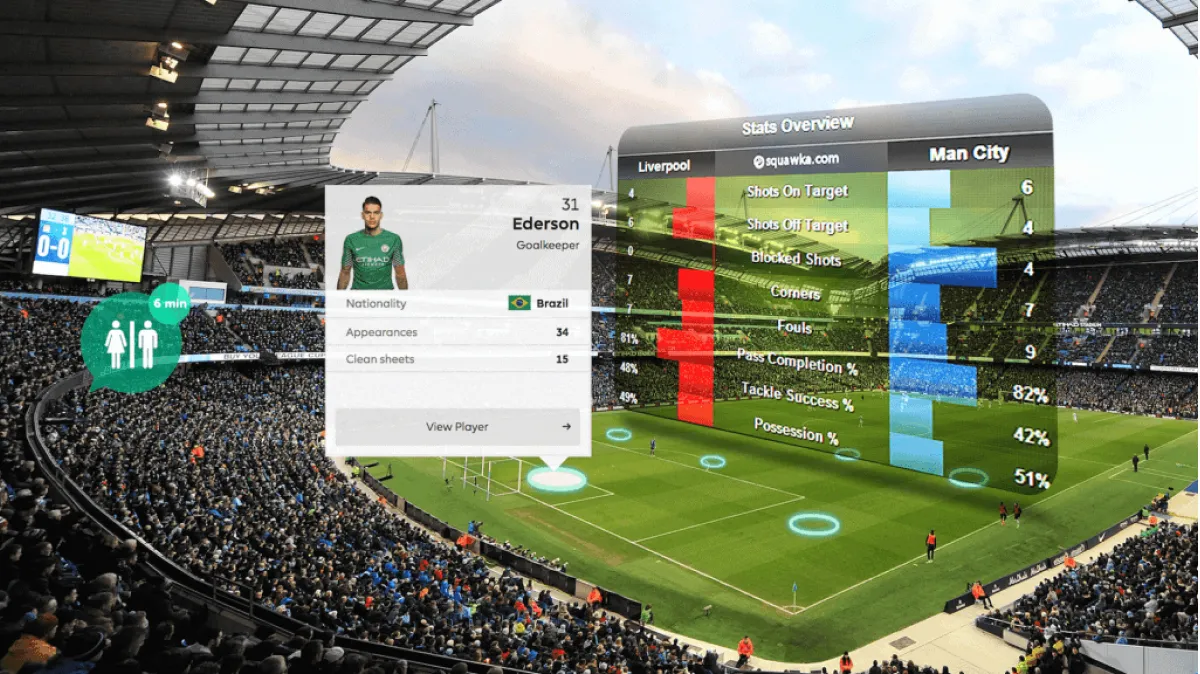
Engaging Millennials & GenZ With Advanced Technology
As the largest workforce in the US, millennials now have the means to spend not just on affordable tickets but also seasonal tickets, VIP seats, festivals, and tours. This means that ticketing and event platforms are working hard to engage millennials; an audience that desires different experiences than past ticketing bases.
In Softjourn's past Survey of Ticketing Leaders, we asked respondents "Which generational base would you like to better serve or engage?". The majority of respondents selected 'Millennials', followed by Generation Z.
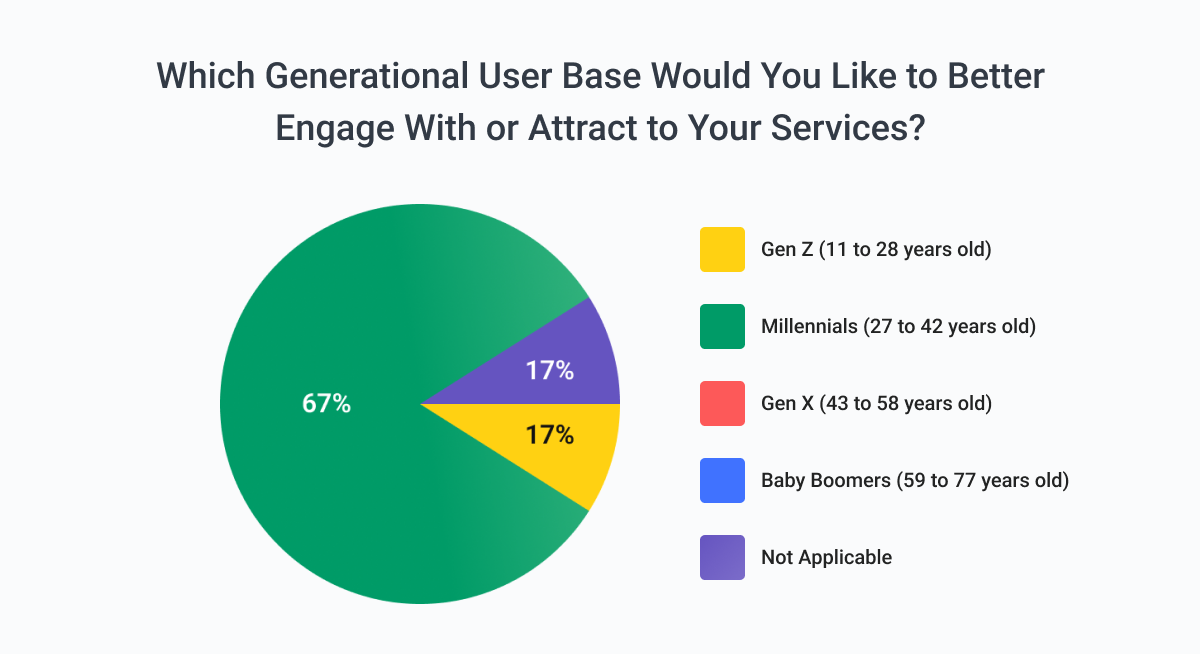
The Rise of AR & VR
To engage millennials effectively, events must embrace digital innovations. Leveraging immersive technologies like virtual reality (VR) and augmented reality (AR) creates captivating experiences that align with the tech-savvy nature of millennials.
Shift to Digital
Implementing event-specific mobile apps, interactive installations, and personalization options fosters a sense of community, ensuring that millennials not only attend but also actively promote these digitally enhanced events. In this digital age, understanding and adapting to millennials' preferences is essential for event organizers to remain relevant and appealing to this generation.
The shift to engage millennials has also led to a significant shift towards online and mobile booking. This trend was already underway in the last decade but gained further momentum during the Covid-19 pandemic.
More than half of attendees now purchase tickets online2, and the percentage of attendees booking on their phones has more than doubled. This shift has been driven by the need to minimize in-person contact and adhere to regulations such as contact tracing and capacity management.
Digital Collectibles
NFT-based digital collectibles have been a buzzworthy addition to ticketing, offering unique memorabilia for fans. However, their popularity is currently facing a downward trend, and their longevity in the market remains uncertain. Despite this, it's worth keeping an eye on this space as innovations continue to emerge.
Focus on Sustainability
The ticketing industry is increasingly adopting sustainable practices to reduce environmental impact. From eliminating paper tickets in favor of digital alternatives to partnering with green venues, these efforts align with the values of environmentally conscious patrons. Sustainability initiatives not only help the planet but also attract a loyal customer base that values eco-friendly practices.
Millennials and Gen Z, in particular, prioritize sustainability when choosing events and services, making eco-friendly ticketing solutions essential for engaging these demographics.
Integration with Social Media
Social media is becoming a vital tool for ticketing platforms to engage with audiences. Seamless integration allows users to share events, purchase tickets directly through social platforms, and receive personalized recommendations based on their online behavior. This approach not only boosts ticket sales but also strengthens brand visibility and customer loyalty.

Balancing High and Low-Demand Events: Dynamic Pricing and Timed-Entry
In today's dynamic ticketing landscape, it's clear that high-demand events continue to attract sizable audiences, while lower-demand events often require additional attention. A multitude of factors, from economic fluctuations and geographical considerations to an expanding array of entertainment alternatives, can significantly influence attendance figures.
This ongoing shift emphasizes the importance of comprehending the nuanced dynamics of demand within the ticketing industry and underscores the need for tailored strategies that accommodate distinct event categories.
Adapting to these fluctuations in demand, ticketing companies have introduced dynamic pricing and variable pricing as effective tools. Variable pricing entails setting different rates for various dates, days of the week, or even specific times of day (intraday pricing).
By offering lower prices during off-peak periods and slightly higher prices for peak times, attractions can optimize revenue while simultaneously meeting customer expectations.
Another notable trend in managing demand is the adoption of timed entry systems, which require or incentivize patrons to book tickets in advance and select specific time slots for their visits. This approach not only aids in capacity planning but also ensures a smoother and more efficient visitor experience.
Subscription-based models are gaining traction as a strategy to drive consistent revenue. These plans offer patrons access to multiple events for a fixed monthly or annual fee, catering to frequent event-goers and ensuring steady attendance even at lower-demand events.
The ability to successfully navigate the dynamics between high-demand and low-demand events is pivotal for event organizers and ticketing platforms in their quest to provide the best possible experience to patrons while maintaining financial viability.

Technologies to Connect In-Person & Virtual Events
Prior to the pandemic, in-person was the primary type of event, and once lockdowns occurred due to Covid-19, we witnessed a huge shift to virtual events. Now that we've relaxed social distancing rules, hybrid events, and live streaming – which combine in-person and virtual components – have become a trend in the ticketing industry.
Hybrid events can take various forms, such as live-streamed concerts, virtual trade shows, and hybrid conferences that have both in-person and virtual sessions.
While hybrid events were initially a useful way for venues and event organizers to adapt to the challenges posed by the pandemic, they continue to be popular even after the pandemic, as they offer attendees more flexibility and convenience.
It does take creativity to make a hybrid event stand out from the rest. To enhance the perceived value of hybrid events in the eyes of the public and thereby increase ticket sales, event organizers have implemented various innovative strategies such as virtual reality experiences, gamification, fan engagement apps, and Web3 technology.
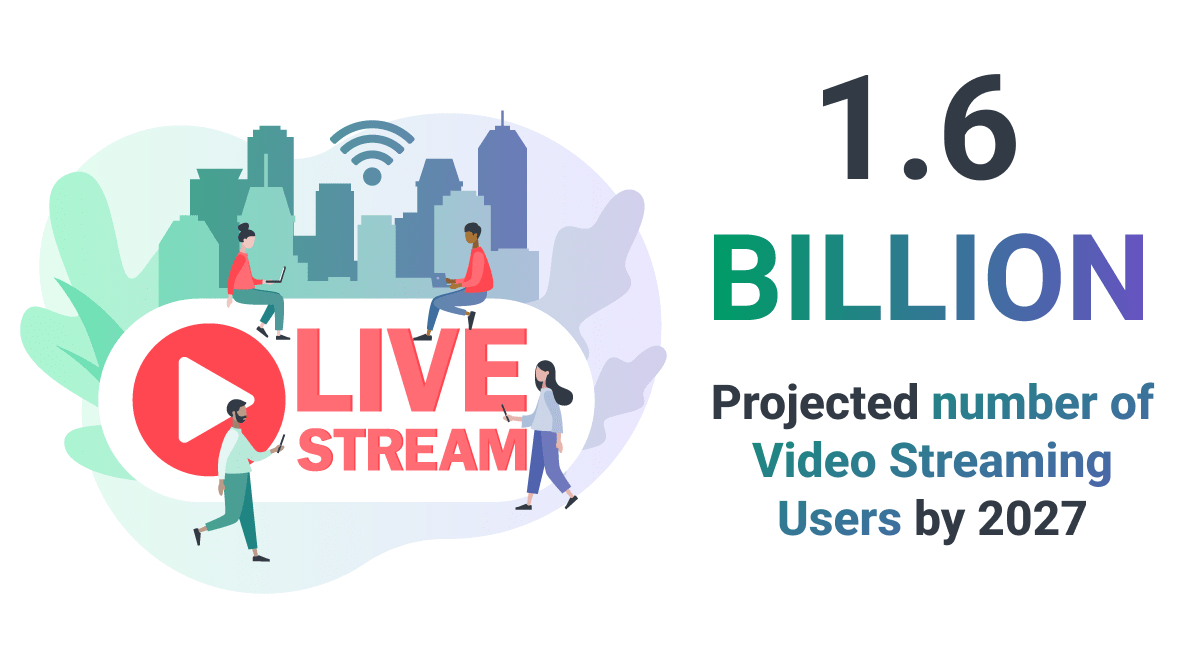
New trends like enhanced livestreaming are creating unique value for virtual audiences. Event organizers are now implementing features like multi-angle viewing, pay-per-view models, and exclusive behind-the-scenes streams to make virtual components more engaging and profitable.
The rise of immersive technologies such as AR and VR is also transforming hybrid events. By allowing attendees to experience in-person events virtually through interactive 3D models or immersive content, these technologies bridge the gap between physical and digital experiences.
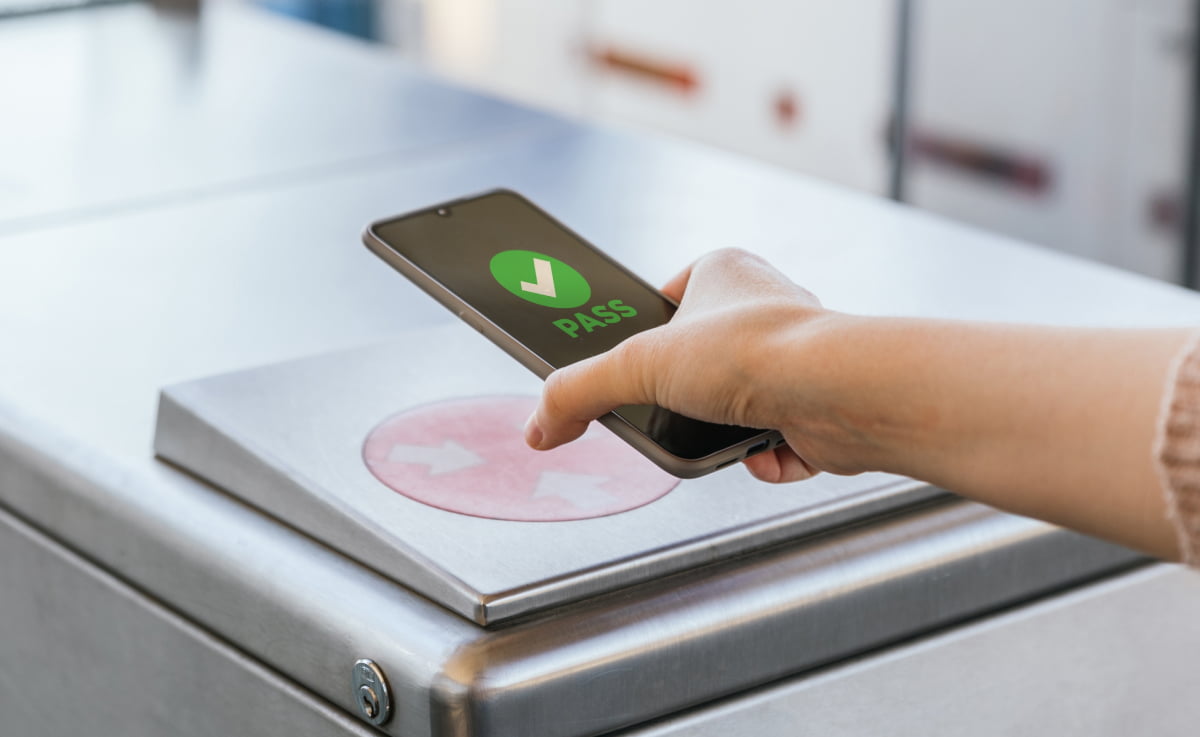
Improved Access Control to Improve Fan Experience
Contactless ticketing, also known as mobile ticketing or NFC ticketing, is an innovative approach to access control that has gained popularity in recent years. It allows patrons to store digital tickets in their electronic wallets, such as Apple Wallet and Google Wallet.
This way, fans access their tickets through their mobile devices, eliminating the need for paper tickets or QR codes and making the process faster and more convenient for patrons and venue staff. Additionally, by using electronic wallets with digital tickets, fans aren’t required to download a separate application for each venue or platform from which they buy tickets.
In the past, patrons were required to unlock their phones, find the app, navigate to the ticket, and enable the ticket to transfer via NFC. Now, there are new technologies that allow attendees to use their tickets in the same way that they’d use a phone to pay - with just a simple tap to a specialized reader.
NFC and contactless ticketing can bring value to all parties involved in the event experience, including the following benefits:
- Higher security through the use of Google and Apple Wallet data protection algorithms.
- Fast recognition by ticket readers.
- Increased reliability.
- Faster processing of patrons.
- More convenience for event-goers.
- No risk of lost paper tickets
For venues, implementing new NFC technology can be quite difficult, not to mention the upfront costs of buying a new ticket reader from a specialized vendor. However, we do predict that each year we will see broader adoption of contactless ticketing since patron convenience is king.
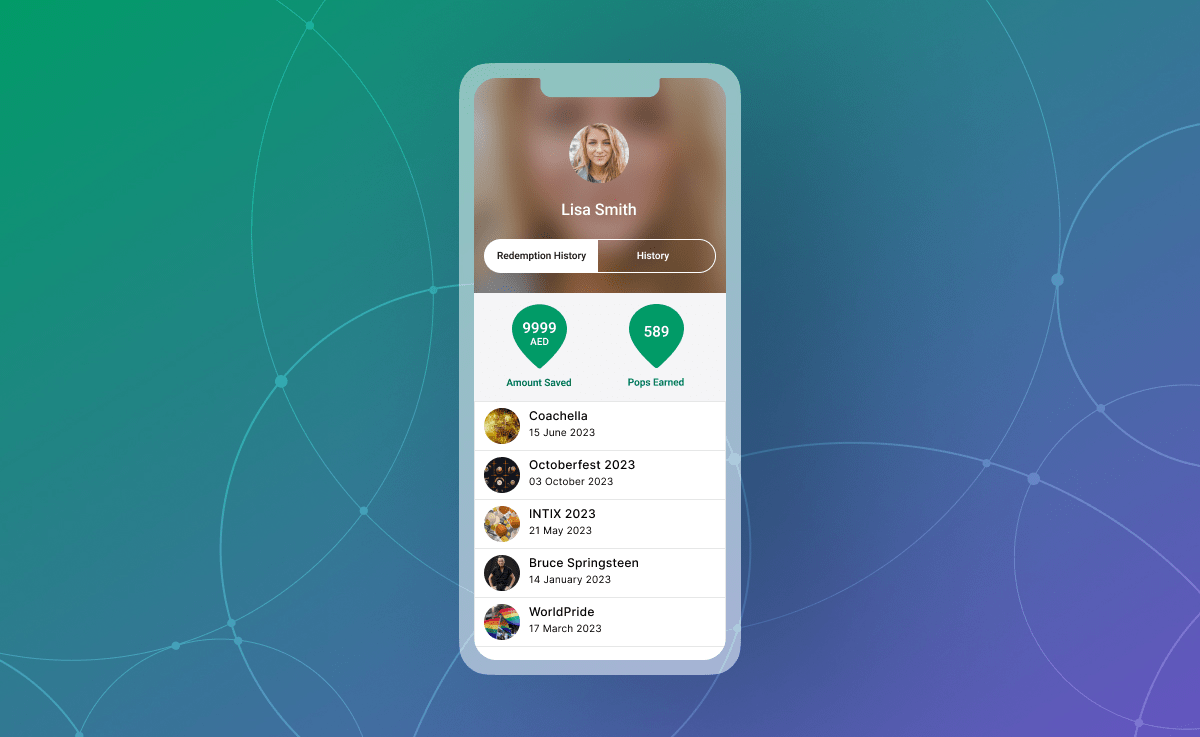
Utilizing AI Tools and Real-Time Data
Artificial intelligence (AI) can help event organizers understand and optimize the patron journey, including predicting and mitigating no-show trends and improving venue mapping. An AI system can use historical data and trends to predict the attendance of different performances and offers a chat function to allow event organizers to gauge the possibility of a patron's attendance.
AI can also forecast how patrons may arrive at the venue, which can help adjust queue processing and aid in procurement planning for merchandise, food, and beverages. Additionally, combining AI with technology like geofencing can enhance event advertising, and fan engagement, and provide an opportunity for patron feedback to address potential pain points.
AI can be used for ticket pricing by analyzing data sets for concerts, sporting events, and theater tickets, such as face value ticket prices versus resale prices, the speed at which tickets sell, historical attendance statistics, and how well tickets typically sell at a particular venue or in a specific city.
Event organizers and ticket vendors can use this data to build customer profiles, which can be matched with future events and other offers to create a more personalized experience for customers.
Many consumers are willing to share their data in order to receive a more personalized experience, and personalization can persuade existing customers to spend more on related goods and services through cross-selling and upselling recommendations.
While historical data remains valuable, real-time data and predictive analytics have become the new standards when it comes to decision-making. The ability to access, store, and implement real-time data is crucial for making timely and informed decisions, especially in rapidly changing situations. This trend emphasizes the growing significance of data-driven strategies in the ticketing industry.
Additionally, new technologies now allow event organizers to identify attendees who previously purchased tickets anonymously. This provides valuable insights for targeted marketing, better personalization, and improved customer engagement strategies. By connecting anonymized data to broader behavioral patterns, ticketing platforms can enhance their advertising campaigns, tailor experiences, and drive ticket sales.

Technology Upgrades for Compliance & Better User Experience
Ticketing platforms that use legacy systems based on outdated technology may struggle to meet the current software needs of an organization. These systems can be costly to maintain, have poor performance, and may require the hiring of staff with specialized skills in outdated technology.
Take for example, when you release tickets for an event with massive demand – will your systems be able to handle load spikes? Through modernizing efforts – such as moving to the cloud – ticketing platforms can feel confident that their systems will be scalable and robust, able to adapt to any amount of demand or user growth.
Unfortunately, one horrible user experience may cause fans to buy tickets elsewhere. Through strategic upgrades, you can eliminate common ticket-buying frustrations, such as application crashes or slow page load. With a faster, optimized buying experience, you will retain users and even gain new patrons.
If you are looking for legacy modernization services to stay competitive in an increasingly digital world, Softjourn can help. Our team of experienced software developers can provide code audit services for your current system, and work with you to find the optimal way to re-architect, rebuild, or replace your outdated technology.

The Rise of Open Distribution
We are witnessing the ticketing industry shift towards more open distribution strategies. Traditional secondary markets are evolving, and ticket exchanges are no longer confined to being secondary. Open or multichannel distribution strategies have become beneficial for both buyers and sellers.
These technologies create a trusted relationship across the entire ecosystem, broadening access to inventory where consumers shop. With more events appearing on multiple exchanges, the industry is adapting to a decentralized ticket-buying experience.
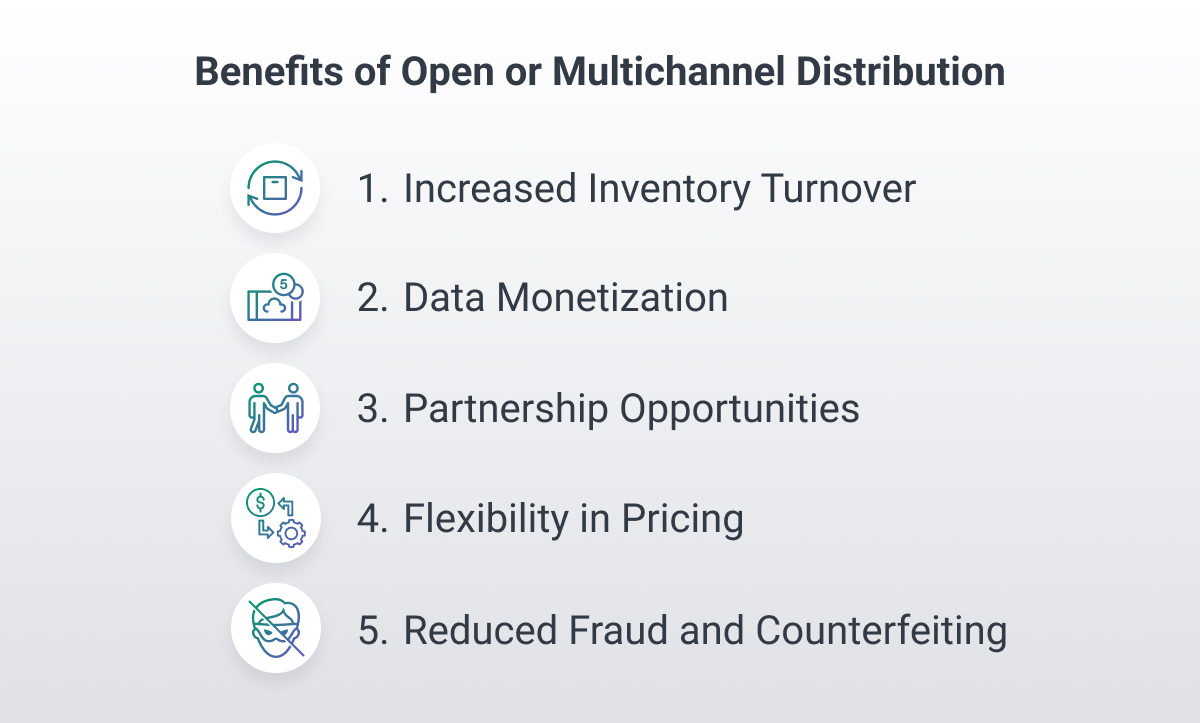
While open distribution can bring some challenges, ticketing platforms will also see these advantages:
- Increased Inventory Turnover: With the ability to distribute tickets through various channels, ticketing companies can optimize the utilization of ticket inventory. This means tickets are sold more quickly, leading to improved inventory turnover and, in turn, increased revenue.
- Data Monetization: Open distribution provides access to a wealth of data from various channels and platforms. Ticketing companies can leverage this data for analytics and insights. They can monetize this information by offering data-driven services and reports to event organizers and promoters.
- Partnership Opportunities: Collaboration within the open distribution ecosystem can lead to partnerships with event organizers, venues, and other stakeholders. These partnerships can be lucrative and mutually beneficial, resulting in shared revenue streams and access to a broader customer base.
- Flexibility in Pricing: Open distribution strategies enable ticketing companies to have more control over pricing. They can adjust prices dynamically based on market demand, competitor pricing, and other factors, allowing them to maximize their profit margins.
- Reduced Fraud and Counterfeiting: By implementing secure ticketing technologies and blockchain-based systems, ticketing companies can reduce the risk of fraudulent ticket sales. This not only protects consumers but also helps ticketing companies maintain their reputation and credibility.
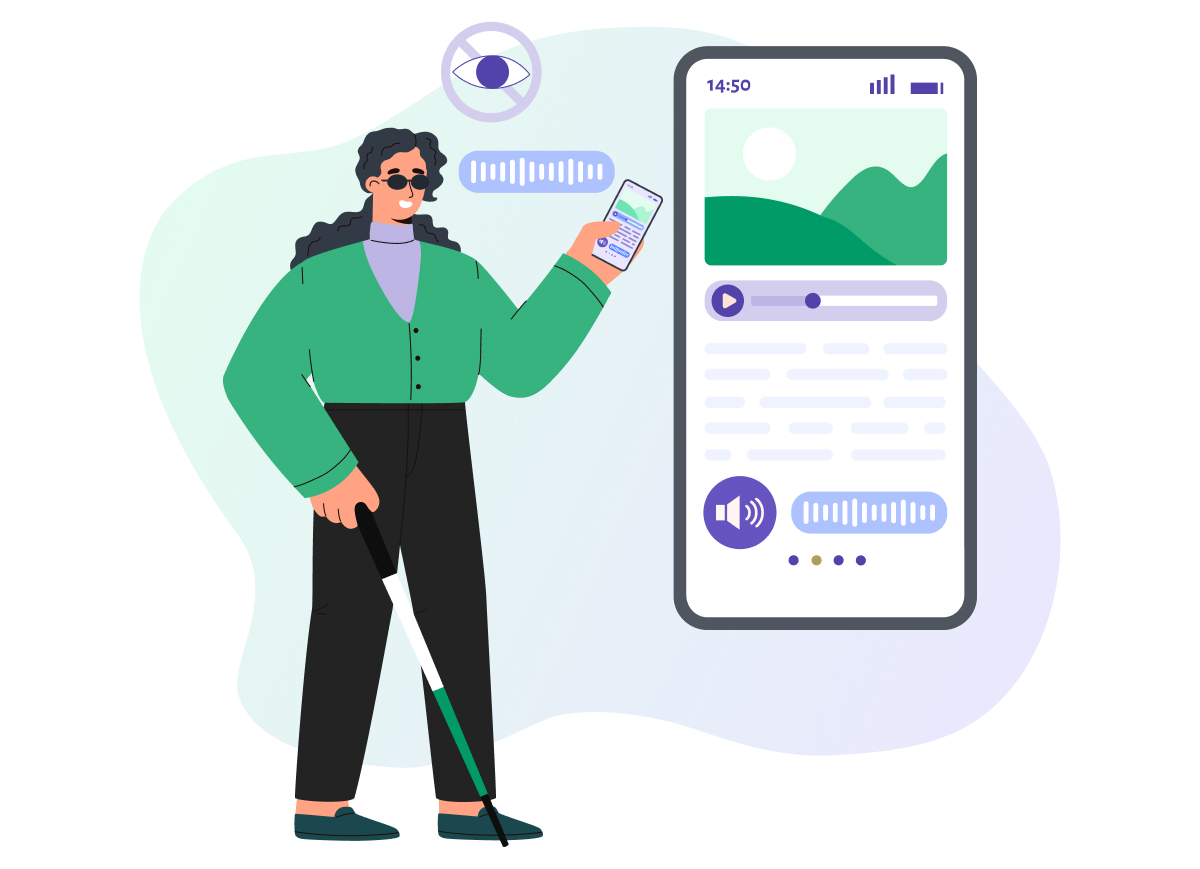
A Greater Focus on Accessibility
There has been an increasing focus on accessibility and inclusivity in the ticketing industry, with efforts to make ticketing systems more accessible for people with disabilities and to promote diversity and inclusion in events and venues.
The ticketing industry is predicted to prioritize creating seamless and expedited entry experiences for event attendees. Beyond entry, venues are increasingly focusing on facilitating swift and convenient purchases of food, beverages, and merchandise. While the integration of frictionless technology may not happen immediately, it is expected to gain traction over the long term.
Besides biometrics, other innovative tools, like accessible venue mapping software and voice-activated ticketing systems, have made it easier for ticketing platforms and venues to comply with ADA regulations and make events more accessible for their patrons.
Ultimately, accessibility is not just a trend for 2025, but something everyone in the ticketing industry should focus on and promote to create ticketing solutions that better serve patrons.

Advancements in Venue Mapping and Reserved Seating
Reserved seating and venue mapping technology have seen significant advancements, making it easier for event organizers to create seamless and customizable experiences for attendees. Tools like Softjourn's Venue Mapping Tool now allow for precise floor plans, ADA-compliant seating, and real-time inventory management.
New features, such as whole-table booking and orphan seat prevention, further enhance both operational efficiency and customer satisfaction. These tools not only streamline ticket sales but also ensure maximum occupancy and revenue optimization. Venue mapping technology is no longer just a logistical necessity—it's becoming a core ticketing feature that wins business and builds loyalty among attendees.
Final Word
As technologies continue to emerge and evolve, the ticketing industry will persistently adapt, seeking fresh approaches to address pricing, audience engagement, and security. This includes mitigating ticket fraud, strengthening accessibility, and elevating both convenience and the overall attendee experience.
We are eager to see how these trends will play out in 2025 and witness what the future holds for the ticket industry.
Did we miss any ticketing trends you are excited about? Please don’t hesitate to let us know - we love to discuss all things ticketing!
Ticketing Industry Updates
AI, Data, and Resale Market Take Center Stage in Industry Forecasts
At TheTicketingBusiness Forum 2025, industry leaders emphasized how AI is rapidly transforming ticketing, from hyper-personalized fan engagement to intelligent automation that connects marketing, customer service, and operations. Experts predicted AI will act as the “connective tissue” across departments, streamlining business outcomes.
The Forum also spotlighted the growing power of data, with calls for more industry collaboration to unlock efficiency and profitability. Meanwhile, concern over the illegal resale market, now valued at €2.5B, sparked renewed calls for unified EU regulation.
Notably, Vivenu projected the ticketing industry to grow 184% to $1.2T by 2032, driven in part by these emerging technologies.
[Source: TheTicketingBusiness Forum, May 2025]
DOJ and FTC Launch Public Inquiry into Anticompetitive Practices in Live Entertainment
Under President Trump’s Executive Order 14254, the Department of Justice and FTC have opened a public inquiry into unfair and anticompetitive practices in the live concert and entertainment industry. The agencies are seeking public input on issues like ticket scalping, bots, and monopolistic behavior, with the goal of informing new regulations or legislation.
The move comes amid broader scrutiny of Live Nation and Ticketmaster, and the administration claims it is a wider effort to restore fairness, transparency, and competition for fans, artists, and small businesses. Public comments are open through July 7, 2025.
[Source: US Department of Justice, May 2025]
Ticketmaster Launches Nationwide All-In Pricing Following FTC 'Junk Fees' Rule
Ticketmaster has rolled out all-in pricing across the U.S., displaying full ticket prices with fees upfront before taxes. The move aligns with the FTC’s new Junk Fees Rule, aimed at improving transparency in event ticketing and other industries.
Previously implemented in 33 states, this national expansion follows growing regulatory pressure and recent directives from President Trump’s Executive Order targeting pricing abuse and secondary market manipulation. Ticketmaster also announced new features like real-time sales updates and virtual queue positioning to further improve the fan experience.
[Source: Ticketmaster, May 2025]



